Author: Nichole Boyd
School/Organization:
John Bartram High School
Year: 2016
Seminar: Our Earth, A Fragile Home
Grade Level: 12
Keywords: climate change, Earth Science, Environmental Science, glaciers, global warming, High School
School Subject(s): Environmental Science, Science
Ecologists currently state that global warming and climate change are results result of the greenhouse gases (methane and carbon dioxide) becoming trapped in the tropospheric level of the earth. Because it takes at least 10 years for methane and 100 years for carbon dioxide to diffuse back out of the atmosphere, current belief is that these gases are the main cause. This unit will explore environmental events from natural disasters to the melting glaciers that may be a direct result of the Earth’s current climate changes. This unit is designed to help students who have little scientific knowledge of the Earth gain a higher level of understanding of human impact on the earth’s stability. Students will explore the following topics: the atmosphere, biosphere, geosphere, lithosphere, hydrosphere and the effects that greenhouse gases have on the world’s glaciers due to our carbon footprint.
This unit is intended for high school environmental students in 9th and 12th Grade. It can be utilized for students on a basic or below basic reading level. This can be used as a supplemental enrichment unit to the School Districts environmental science curriculum.
Download Unit: 16.03.02-unit.pdf
Did you try this unit in your classroom? Give us your feedback here.
The earth is crying out by exhibiting drastic changes in its climates stability. The glaciers of the world are receding at astronomical rate. As a result, more natural disasters involving water have taken place. Since the turn of the millennium the United States has witnessed 28 catastrophic events from cyclones in 2001 to the Blizzard of 2016. These events are on a rise and student’s environmental awareness is paramount in order to figure out a solution or how to weather the storm. In order to increase comprehension and enhance environmental awareness in students with varying learning disabilities will require a multitude of activities that increases their overall understanding and skillsets. Traditionally a movie or story would have been enough in providing an overview of Global Warming and its effects on earth. However, with an influx of students leaving elementary school lacking the reading skillsets needed to navigate high school makes this task harder to accomplish. Teachers must use a variety of instructional strategies’ which allow students to become free thinkers. These strategies must foster environmental awareness. Teachers must use differentiated instruction to meets the needs of all children when planning for this unit. According to Pashler and McDaniel et al. in their 2008 article on learning styles mentions how a teacher should assess their students and adapt their classroom methodologies to best fit each students learning style (Pashler, 2008). To accomplish teaching students about global warming the use of audial visual materials as well as activities that will enhance their writing capabilities may be a good place to start. To extend the learning experience students should be encouraged to construct a model of a mountain with a glacier. This hands on experience will help students better understand the relationship shared between rock and ice. The models can be either one that represents a time period in the past or one that represents a glacier of today’s time. This activity will give students an excellent hands-on experience of the impact global warming has had on the glaciers that are in recession today.
This unit is intended for high school environmental students in 9th and 12th Grade. It can be utilized for students on a basic or below basic reading level. This can be used as a supplemental enrichment unit to the School Districts environmental science curriculum. Students have a 54-minute class period 4 days a week and a 43 min class period on Wednesdays. This unit can be included with unit 4 of the environmental science class curriculum. This unit will take 10 -18 class periods to complete depending on student’s skill sets. Students will cover the following objectives: Students will cover the following objectives:
Classroom Discussions Classroom discussions, that begins with the teacher describing the student learning objective or purpose of the discussion. Sometimes discussions may be initiated by the posing of an open-ended question. Teachers can use a number of techniques to encourage students to participate in discussions, including calling on specific people, or assigning students to be an “expert” or leader for various parts of the discussion. Many cooperative activities include a “small group” discussion as teams work together. Activating Prior Knowledge (APK) The teacher will activate student prior knowledge during each lesson. Through the use of this strategy teachers help students make connections to the task at hand to what the student already knows from prior lessons. Directed Reading Thinking Activity (DRTA) /Linking prior knowledge Throughout reading, questions are used to activate students’ existing knowledge. Students are encouraged to make predictions. Explicit teaching Instruction used to meet the needs of students by engaging them using clearly stated learning objectives. Teachers should focus instruction on identified curriculum content and activate prior knowledge and skills at the beginning of the unit. Lessons are designed to build student skillsets as they move forward with the unit. Goals and expectations should be clearly stated throughout each lesson. Scaffolding Using this strategy, the teacher provides temporary support until help is no longer needed. Can take many forms (examples, explanations, organizers, etc.) but needs to build on student’s existing knowledge. Use of visuals The use of Power-point presentations, animations, and models and video’s will serve as good visual aids and help students form better connections to the effects of global warming. Think/Pair/Share Students think individually, then pair (discuss with partner), and then share ideas with class.
Lesson 1 Introduction to the World around You Posters During this lesson the teacher should introduction the levels of Organization from smallest to largest for each of the following terms: Species, Population, Community, Ecosystem, Biome, and Biosphere. 1 class period Materials: Power-point presentation on Levels of Organization Poster board for each group Markers or coloring pencils Objective: Students will be able to (SWBAT): design a poster that depicts the correct Level of organization from smallest to largest. Strategies: Scaffolding Use of visuals Explicit teaching Think/Pair/Share Procedures: Teachers will present power-point presentation to students and allow for them to record notes in a journal for later use. The teacher will show visuals that display how each level fits into the next. Students will create a poster that clearly show how each level is a part of a whole from smallest to largest for the following levels: Species, Population, Community, Ecosystem, Biome, and Biosphere. Posters will be reviewed corrected (if necessary) and displayed around the room to remind students of the levels of Organization throughout this unit. Lesson 2 The Air Out There (Appendix A) During these lesson students will learn about the atmospheric levels, the distance, average temperature of each layer and the air composition of the Troposphere. 2 or 3 class periods Materials: Objectives: Strategies: Day 1. Do Now: Students practices metric conversion problems for distance (5-15 minutes) Kilometers-centimeters and kilometers-miles. Examples should be placed on the board. Problems are reviewed on board. Direct/Guided instruction: Teacher will present power-point presentation on the Atmosphere. Independent practice: Teacher will post a picture (See Appendix C) of the atmosphere layers on board or give a picture to each group of four students. Students will use a ruler to calculate the distance from centimeter to kilometers then to miles. Students should be encouraged to use the metric table found at the back of their journals or an online metric converter. Teacher will have students to calculate the distance of each layer of the atmosphere. Distances should be shared with groups and reviewed with the class. Day 2 Students should share out groups finding from day 1 and record the information on the chart. The teacher should also redirect on all incorrect answers. Students should compare distance in vertical miles for each layer to distance in miles horizontally this will give students a better understanding of how far away vertically each layer is. The Teacher should be prepared to give a nearby city or state as a comparison. Strategies: Scaffolding Use of visuals Explicit teaching Direct instruction Think/Pair/Share Materials: Chart Paper Markers Pencil or pens World Map for students Atlas Objectives: SWBAT: calculate the distance IOT visualize how far away from Philadelphia is each layer in miles. Independent Practice: Student will draw or color an illustration of the earth and its’ atmospheric layers and add their calculations in miles to each layer. (Note: Teacher can also obtain an atmosphere coloring sheet from the internet). Lesson 3 An Inconvenient Truth (See appendix A) During this lesson the students will follow a detailed questionnaire to help them keep track of important information and details for class discussion. Class discussion should follow every 6-10 questions to allow students to make predictions and help with comprehension. Teacher can decide to show the whole documentary or small parts it’s up to the teacher. Materials: Teachers should have a detailed questionnaire for each video. Questionnaire for most of the documentaries listed in this unit can obtained by using the website Biologymoviesheet.com or you can make up your own Objectives: Strategies: Group or whole class discussions Lesson 4 Chasing Ice (see Appendix A) During this lesson the students will follow a detailed questionnaire to help them keep track of important information and details for class discussion. Class discussion should follow every 6-10 questions to allow students to make predictions and help with comprehension. Materials: Teachers should have a detailed questionnaire for each video. Questionnaire for most of the documentaries listed in this unit can obtained by using the website Biologymoviesheet.com, moviesheet.com or you can make up your own Objectives: Strategies: Group or whole class discussions Activating prior knowledge Lesson 5 Making of North America (see Appendix A) During this lesson the students will follow a detailed questionnaire to help them keep track of important information and details for class discussion. Class discussion should follow every 6-10 questions to allow students to make predictions and help with comprehension. Materials: Teachers should have a detailed questionnaire for each video. Questionnaire for most of the documentaries listed in this unit can obtained by using the website Biologymoviesheet.com, moviesheet.com or you can make up your own Objectives: Strategies: Group or whole class discussions Activating prior knowledge Lesson 6 The Global Warming War (Appendix A) During this lesson the students will follow a detailed questionnaire to help them keep track of important information and details for class discussion. Class discussion should follow every 6-10 questions to allow students to make predictions and help with comprehension. Materials: Teachers should have a detailed questionnaire for each video. Questionnaire for most of the documentaries listed in this unit can obtained by using the website Biologymoviesheet.com, moviesheet.com or you can make up your own. Objectives: Strategies: Small Group or whole class discussions Activating prior knowledge Lesson 7 The Core (see Appendix A) During this lesson the students will follow a detailed questionnaire to help them keep track of important information and details for class discussion. Class discussion should follow every 6-10 questions to allow students to make predictions and help with comprehension. Note to the Teacher: at the end of this movie express to students the fiction of the movie the questionnaire comes with a fact sheet be sure to review with student’s aspects of the movie that is true and false. Materials: Teachers should have a detailed questionnaire for each video. Questionnaire for most of the documentaries listed in this unit can obtained by using the website Biologymoviesheet.com, moviesheet.com or you can make up your own. Objectives: Strategies: Group or whole class discussions Activating prior knowledge At the end of this documentary the teacher should have a class discussion to help student form an opinion. Lesson 8 The Day After Tomorrow (Appendix A) During this lesson the students will follow a detailed questionnaire to help them keep track of important information and details for class discussion. Class discussion should follow every 6-10 questions to allow students to make predictions and help with comprehension. Note: the myths section of this questionnaire to eliminate things that are not true. Materials: Teachers should have a detailed questionnaire for each video. Questionnaire for most of the documentaries listed in this unit can obtained by using the website Biologymoviesheet.com, moviesheet.com or you can make up your own. Objectives: Strategies: Group or whole class discussions Activating prior knowledge Rationale for viewing: This movie will give students a firmer understanding of the effect global warming can have on the world. Lesson 9. 2012 (see Appendix A) During this lesson the students will follow a detailed questionnaire to help them keep track of important information and details for class discussion. Class discussion should follow every 6-10 questions to allow students to make predictions and to help with comprehension. Materials: Teachers should have a detailed questionnaire for each video. Questionnaire for most of the documentaries listed in this unit can obtained by using the website Biologymoviesheet.com, moviesheet.com or you can make up your own. Objectives: Strategies: Group or whole class discussions Activating prior knowledge Lesson 10-13. Other Documentaries and movies good for helping students gain a better understanding of the impact of Global Warming and how it can affect the climate especially for struggling students: Lesson 1. Day 1 Making a Volcano/Paper Mache Mountain During this hands-on project the student will learn through creating art. Students will construct models of mountains with attached glaciers are a great way to help students understand the plates tectonic (must give a lesson on the earth’s crust first) and how many of the earths great wonder were formed such as the Grand Canyon for example. Materials: procedures: Teacher should display picture of intact glaciers and melting glaciers around the classroom. Teacher should demonstrate how to blend flour, salt, cornstarch and water. The key is to have the consistency of pancake batter not to thin not to thick. Follow the step outlined below. Blend all ingredients until smooth and lump free as possible. DO NOT Use all the water you have enough for 2 batches. Once batter is made students will cut the top off of bottle and stick the bottle in the center of their cardboard using tape or glue (glue is easier). Then have students will make 15-20 balls out of newspaper sheets one sheet of newspaper can make up to 4 balls. Dip each ball in batter and rub it around the entire ball (see appendix B) Next students will stack the balls around the bottle all the way up to the top (more paper balls may be need depending on the desired shape). Students can secure shape by using tape (see photos) set in a safe place (if your school has mice make sure the place is high up) and allow it to dry overnight. Cover any remaining batter with a plastic bag. Day 2 Depending on shape students may need to add more balls of paper (allow to dry overnight in this case). If desired shape is obtained student will next cut newspaper into strips, then wet each strip with batter and adhere it loosely around the paper balls. Students do not have to pull tight rock is not smooth. Once the entire mountain/volcano is wrapped including the mouth of the bottle allow to dry overnight. Day 3. Have student check for any holes and make any repairs. Students will use paint tp paint the paper Mache’ and the cardboard. Allow to dry overnight. Day 4. Students will use cotton balls and glue (use thin lines) to attach cotton balls to mountains. Students will use whole cotton balls closely placed or pulled cotton balls depending on what type of glacier (intact or melting). Day 5 Have students write a story about their mountain/volcano as an extension lesson. The Teacher can choose what to have students include in the story: Name, history, location, last eruption, devastation etc. Day 6. Have Students present their projects to classmates or display to school.
(CK-12 is a good electronic source that allows tea hers to assign whole class assignments on all science topics students can access this site though student net/schoolnet.) (Great resource for climate changes and its relationship to global warming) (Great source for teachers and students to view simulations on Glaciers and the greenhouse effect.) (Great resource for visual simulations for students to view the greenhouse effect and glaciers.) (Perfect movie to show students how climate changes could trigger the onset of an ice age) (Excellent movie for getting students to understand the destruction global warming could cause.) (An excellent resource to use as an introduction to global warming, it will help establish a reference point for students) (article on problem based learning good source for teachers to gain a better understanding of the benefits of PBL) (Great documentary that gives students insight of how North America was created). (Documentary that looks at global warming from the weather stand point) (A great source to begin understanding what learning style is and the argument behind the use in educational settings) (Good source to use to help students understand the impact of Global warming)
Appendix A Will include picture of each DVD’s and pictures of glaciers and natural disasters Appendix B: Pictures of Student Glacier projects pictures description: Appendix C Representation of melting Glaciers Appendix D. Worksheets for above lesson adapted from Lesson Planet. All movie worksheets can be found on movieworksheets.com.

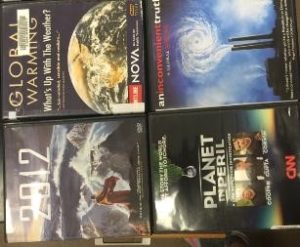
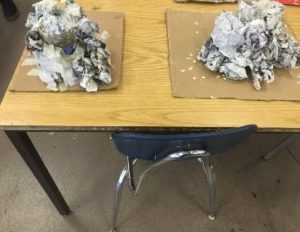




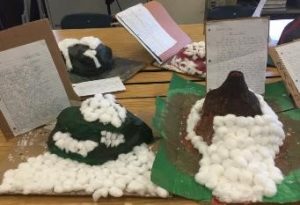
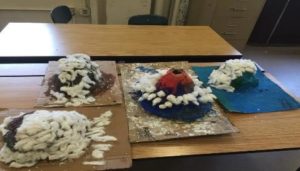
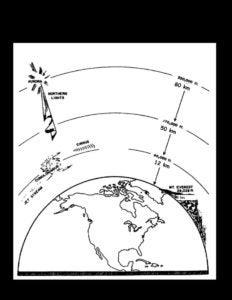


Next Generation Standards: HS-ESS2-2 Analyze geoscience data to make the claim that one change to Earth’s surface can create feedbacks that cause changes to other Earth systems. HS-ESS2-4 Use a model to describe how variations in the flow of energy into and out of Earth’s systems result in changes in climate. HS-ESS3-1 Construct an explanation based on evidence for how the availability of natural resources, occurrence of natural hazards, and changes in climate have influenced human activity. HS-ESS3-5 Analyze geoscience data and the results from global climate models to make an evidence-based forecast of the current rate of global or regional climate change and associated future impacts to Earth systems. HS-ESS3-6 Use a computational representation to illustrate the relationships among. Earth systems and how those relationships are being modified due to human activity.